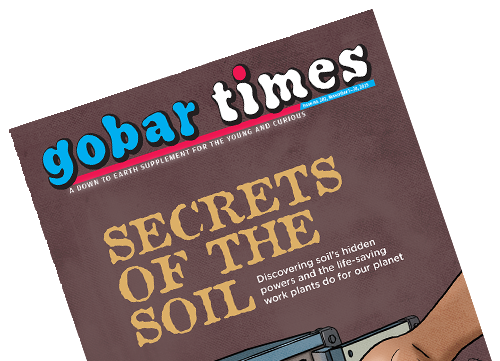
Trees are indispensable for our survival. We rely on them for fuel, fodder, medicine, and innumerable other necessities. They make our planet conducive for life. According to a research published by Nature Climate Change, the world’s forests sequestered about twice as much carbon dioxide as they emitted between 2001 and 2019, thus playing a critical role in mitigating climate change. Therefore, keeping in mind the saying, van se vayu, vayu se aayu (air from forests, life from air), planting saplings is very important for conserving our environment...

“Such a beautiful place, to be with friends”. Fans of the Harry Potter film series will remember this line, uttered in one of the most heart-breaking scenes of the saga by arguably the most beloved character of them all, Dobby the house-elf. As the adorable elf breathes his last in the arms of his friend and hero, Harry Potter, he inadvertently invites viewers to marvel at the vast, expansive beach that then becomes his gravesite. Twelve years after...

Entrepreneurial projects and learning-by-doing activities help build environmental consciousness among young school children. ************************************************************************ Our surroundings are indispensable to our survival. Hence, environmental conservation has become a high priority the world over, owing to climate crisis, pollution, land degradation, etc. Environmental awareness can be attained by changing the attitude...

In summers this year, some European rivers had dried substantially, causing drought in many parts of the region. It revealed to their surface, some ancient stones with intricate engravings on them. Their markings used to indicate the water-level of these rivers, which served as a common forecasting tool for famines. Such stones were called hunger stones. One such is disclosed at the banks of the Elbe River. Dated to 1616 AD, its rock is etched with a warning in German...

Learn why cheetahs became extinct in India and all about their re-introduction

Hunting animals used to be central to the survival of most human communities over most of human history, whether it be for food or medicines or to use their fur and skin as clothes and rugs. Communities had developed ways to hunt animals without overexploiting them, such that the animals and humans could survive together. While we try to inculcate the values of sustainability in people today through classes and lectures, such values used to be a matter of common sense. If you kill all the animals this year, what are you going to hunt next year?...

Mushrooms have always enthralled our imagination. Let’s step onto a captivating trail to understand them and the world they inhabit.

The Limca Book of Record holder, Rakesh Khatri, will offer an inspiring chitter-chatter on sparrow conservation.

Commemorating the Azadi ka Amrit Mahotsav with a brief tale of our peoples and environment from c. 1872–2022, spanning about 75 years before and after our tryst with destiny. ************************* 'Why was India lost?’ asked Mahatma Gandhi in his famous little book of philosophies, the Hind Swaraj, in 1909. Without any pun intended, he answered some lines later: ‘The English have not taken India; we have given it to them.’...

The World Water Woe is real. There is crisis everywhere because our water resources are limited. A lot of water is wasted when we use it carelessly. Therefore, we should conserve it by handling it judiciously. Watch this inspiring movie Drop by Drop featuring the little heroes of class 3, reminding us about the importance of saving water by following the right practices. These practices focus upon three simple ways of preserving water before, and not after, its consumption. For example...

